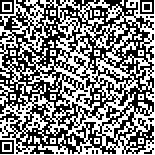| 本文已被:浏览 392次 下载 249次 |

码上扫一扫! |
|
|
| 基于遥感的农村居民点地理景观格局演变研究——以山东省德州市为例 |
|
王玮莹1,2,李仕冀3,邵长秀1,杨婷1,胡华浪4,邓祥征1,2,孙志刚1,2,5
|
|
1.中国科学院地理科学与资源研究所,北京 100101;2.中国科学院大学资源与环境学院,北京 100049;3.中国农业大学土地科学与技术学院,北京 100193;4.农业农村部大数据发展中心,北京 100125;5.中科山东东营地理研究院,东营 257000
|
|
| 摘要: |
目的 “合村并居”作为农村发展与城乡融合的一种典型的地理空间形式,但是目前缺少定量刻画与评估“合村并居”地理空间演变的科学方法,文章旨在提出一套基于卫星遥感与地理景观理论的定量刻画农村居民点地理景观格局的方法,并以山东省德州市为例分析农村居民点自2007年以来的地理景观格局演变规律。方法 以山东省德州市为研究区,通过2007年、2015年和2020年Landsat遥感数据刻画农村居民点演变特征;筛选景观格局指数,并基于熵权法定量分析县域农村居民点演变进程。结果 (1)市域尺度上,相比于2007—![]() ![]() 2015年、2015— 2015年、2015—![]() ![]() 2020年农村居民点变化进程加快,原自然村居民点斑块面积和斑块数量减少趋势明显;(2)斑块尺度上,较小面积的农村居民点数量减少幅度大,现存农村居民点形状的不规则程度与复杂程度降低;(3)县域尺度上,各县之间农村居民点变化进程存在一定差距,其中德城区农村居民点变化进程最快,夏津县进程最为缓慢。结论 该文提出的方法有效刻画了农村居民点地理景观格局及其演变特征,可为“合村并居”科学评估、规划设计与政策推进提供科学支撑。 2020年农村居民点变化进程加快,原自然村居民点斑块面积和斑块数量减少趋势明显;(2)斑块尺度上,较小面积的农村居民点数量减少幅度大,现存农村居民点形状的不规则程度与复杂程度降低;(3)县域尺度上,各县之间农村居民点变化进程存在一定差距,其中德城区农村居民点变化进程最快,夏津县进程最为缓慢。结论 该文提出的方法有效刻画了农村居民点地理景观格局及其演变特征,可为“合村并居”科学评估、规划设计与政策推进提供科学支撑。 |
| 关键词: 合村并居 农村居民点 时空演变 景观格局分析 定量评估 |
| DOI:10.7621/cjarrp.1005-9121.20240214 |
| 分类号:C192.82;K901;P237 |
| 基金项目:国家自然科学基金创新研究群体科学基金“农业土地利用系统管理”(72221002);中国科学院战略性先导科技专项“地球大数据科学工程”(XDA19040303);黄河三角洲人才项目(2020-2024) |
|
| STUDY ON THE EVOLUTION OF RURAL RESIDENTIAL LANDSCAPE PATTERN BASED ON REMOTE SENSING——A CASE STUDY OF DEZHOU CITY, SHANDONG PROVINCE |
|
Wang Weiying1,2, Li Shiji3, Shao Changxiu1, Yang Ting1, Hu Hualang4, Deng Xiangzheng1,2, Sun Zhigang1,2,5
|
|
1.Institute of Geographic Sciences and Natural Resources Research, Chinese Academy of Sciences, Beijing 100101, China;2.College of Resources and Environment, University of Chinese Academy of Sciences, Beijing 100049, China;3.College of Land Science and Technology, China Agricultural University, Beijing 100193, China;4.Development Center for Big Agri-data, Ministry of Agriculture and Rural Affairs, Beijing 100125, China;5.Shandong Dongying Institute of Geographic Sciences, Dongying 257000, Shangdong, China
|
| Abstract: |
| As a typical form of geographic space for rural development and urban-rural integration, “combination of villages” is currently lacking in scientific methods for quantitative characterization and evaluation of the geographic spatial evolution of “combination of villages”. Therefore, this paper aims to put forward a set of methods for quantitative characterization of the geographic landscape pattern of rural settlements based on satellite remote sensing and geographic landscape theory. As a case study in Dezhou city of Shandong province, this study analyzed the evolution of the geographical landscape pattern of rural residential areas since 2007. Taking Dezhou city of Shandong province as the study area, the evolution characteristics of rural settlements were characterized by landsat remote sensing data in 2007, 2015 and 2020. The landscape pattern index was screened, and the evolution process of rural settlements was quantitatively analyzed based on entropy weight method. The results showed that: (1) At the municipal scale, compared with 2007-2015, the change rate of rural residential areas accelerated from 2015 to 2020, especially the patch area and patch number of original rural residential areas decreased significantly. (2) On the patch scale, the number of rural settlements in smaller areas decreased significantly, and the irregularity and complexity of the existing rural settlements decreased. (3) At the county scale, there was a gap in the process of rural residential change among counties, among which Decheng district was the fastest and Xiajin county was the slowest. Therefore,the method proposed in this study can effectively describe the geographical landscape pattern and its evolution characteristics of rural settlements, which can provide scientific support for the scientific evaluation, planning and design and policy promotion of “combination of villages”. |
| Key words: the combination of villages rural residential area spatio-temporal evolution landscape pattern analysis quantitative evaluation |